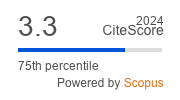Article | Open Access
Narratives of Territorial Cohesion and Economic Growth: A Comparative Study
| Views: | 2550 | | | Downloads: | 1461 |
Abstract: The ability of regions to develop new productive capacities and to address the needs of inhabitants has become central in the EU agenda to trigger cohesion, sustainable growth and equality. This ability does not derive only from material assets but also from cognitive ones, such as trust, ways of cooperation, governance cultures and sense of belonging. Cognitive aspects are in fact fundamental in making the most of the greater potential of territorial features. Using the concept of territorial capital, we investigate this mix between material and cognitive assets in regional planning discourses. Territorial capital raises issues of spatial diversity and inequality as questions of access. Starting from the theoretical framework suggested by Servillo, Atkinson, and Russo (2011) on attractiveness and mobilization strategies, this article addresses the issue of territorial inequalities on material and cognitive bases by analysing mobilization discourses on territorial capital at a regional scale in Italy and Austria. The investigation of three case studies at differentterritorial scales (urban, suburban and rural) in each country allows both intra-regional and inter-regional comparison. By mapping the discursive structures of local economic development documents and key-actor interviews, we analyse the different mobilizing strategies in these contexts. Comparing inter-regional mobilization provides an in-depth insight into differences as well as similarities of cohesion strategies in regional planning on multiple levels. This can spark new territorially sensitive schemes for further sustainable socio-economic and equalising development that connects with the social structures on the ground.
Keywords: cognitive capital; cohesion; mobilizing strategies; regional planning; territorial capital
Supplementary Files:
Published:
© Tatjana Boczy, Marta Margherita Cordini. This is an open access article distributed under the terms of the Creative Commons Attribution 4.0 license (http://creativecommons.org/licenses/by/4.0), which permits any use, distribution, and reproduction of the work without further permission provided the original author(s) and source are credited.


